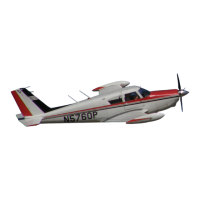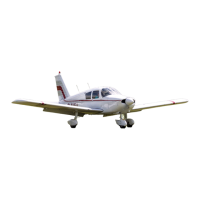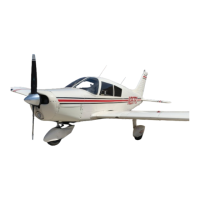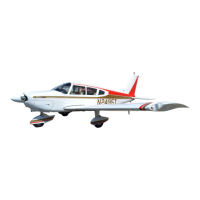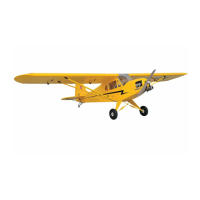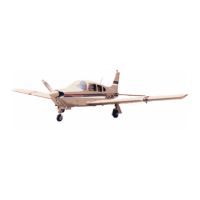PIPER COMANCHE SERVICE MANUAL
04/01/09 VI - LANDING GEAR AND BRAKE SYSTEM
1H21
SECTION VI
LANDING GEAR AND BRAKE SYSTEM
6-1. Introduction.
Contained in this section are instructions for troubleshooting, overhaul, inspection and adjustment of the
PA-24, PA-24-250, PA-24-260, and PA-24-400 landing gear, landing gear retraction system, and brake
system. Also, adjustments for the electrical safety, down limit, up limit, and warning switches.
6-2. Description.
The PA-24 Comanche series tricycle landing gear system is an air-oil oleo-type unit that is electrically
operated, fully retractable with the nose gear retracting aft into the nose section and the main gear
retracting inboard into the wing. Gear doors operated by gear movement partially cover the gear when
retracted.
The retraction mechanism consists of an electric motor and transmission assembly, torque tube
assembly, push-pull cables to each main gear and a push-pull tube to the nose gear. Limit switches are
installed in the system to cut off the transmission motor when the gear is fully extended or retracted.
These switches also operate gear indicator lights in the cabin. To prevent the gear from retracting while
the airplane is on the ground, an anti-retraction safety switch located on the left main gear prevents the
gear from retracting until weight off the gear has allowed the strut to extend to within three-quarters of
an inch of full extension. When the manifold pressure is reduced below 10 to 12 inches and the landing
gear is not down and locked, a warning horn will sound. In the cockpit, located between the pilot seats,
under the floor panel, is an extension handle used to manually extend the landing gear while in flight
should it become necessary. Also, it may be used to extend and retract the gear when the airplane is on
jacks.
The brakes are hand-operated hydraulically by one master cylinder on the early models and hand and/or
toe-operated individual master cylinders mounted standard on the left (and optional on the right) side
rudder pedals on the later models. A reservoir, located on the forward side of the firewall, supplies
hydraulic fluid to the master cylinder. From the cylinder the fluid is routed through lines and hoses to a
parking brake valve located under the floor panel in front of the left pilot's seat on the early models,or on
the master cylinders of late models. The fluid is then directed to the brake assemblies on each main
landing gear. The brakes are self-adjusting, single-disc, single-housing, double-piston assemblies. To
operate the brakes: in early models pull the brake lever back; in later models pull the brake lever back or,
for differential braking, apply toe pressure to the top of the rudder pedals; and, in PA-24-260 C and
Turbo C models apply toe pressure to the top of the rudder pedals. The parking brake may be actuated by
applying the brakes and pulling out the parking brake handle. To release the parking brake, apply the
brakes and push in on the parking brake handle.
6-3. Troubleshooting.
Troubles peculiar to the landing gear system are listed in Table VI-II at the back of this section along
with their probable causes and suggested remedies. When troubleshooting, check the power supply and
ground of the items affected. If no trouble is found, the trouble probably exists inside individual pieces
of equipment.
6-4. Landing Gear System.

